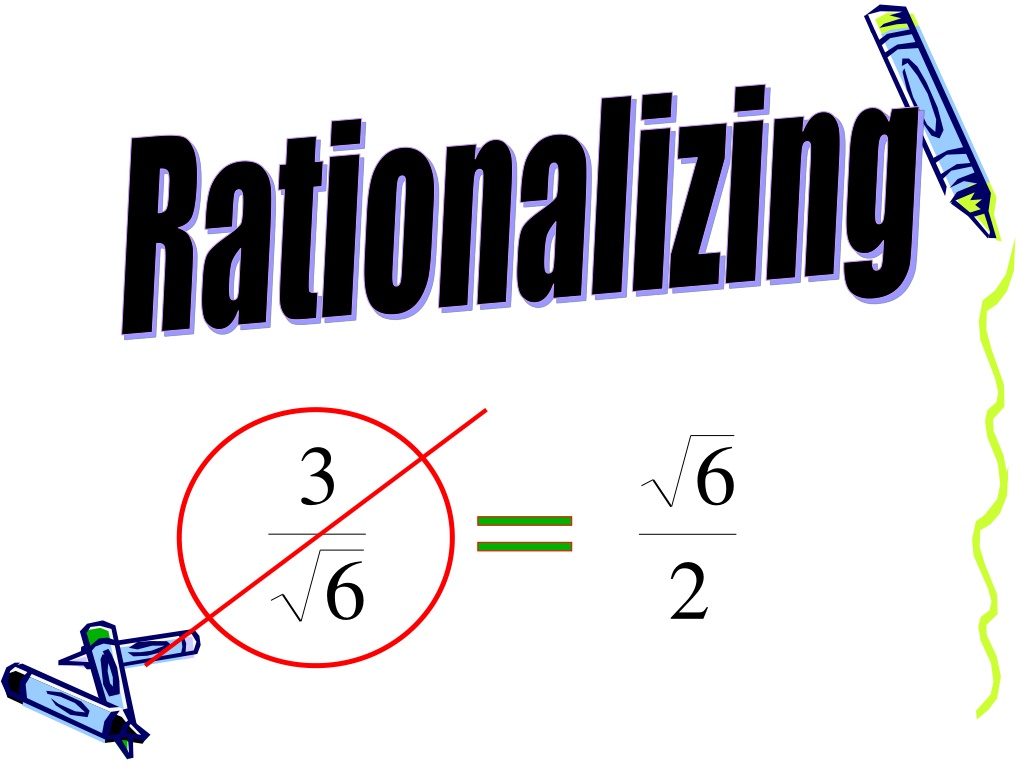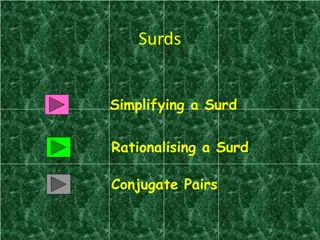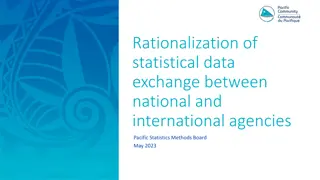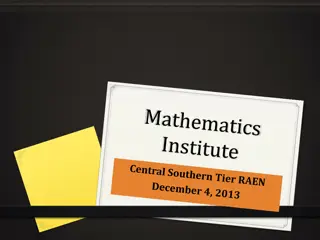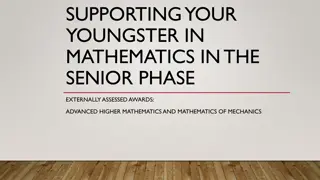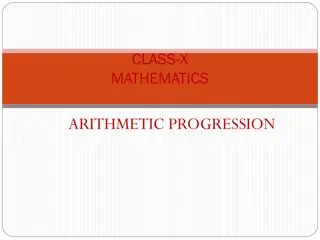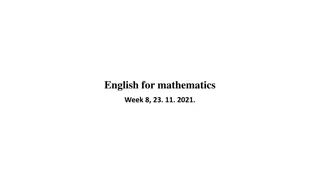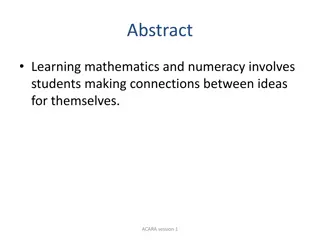Understanding Rationalizing in Mathematics
Discover the essential concept of rationalizing in mathematics, focusing on not leaving radicals in the denominator of a fraction. Learn how to change the denominator of a fraction without altering its value by multiplying the numerator and denominator by the same number. Explore the process of rationalizing to convert the denominator into a rational number, illustrated step-by-step with examples.
Download Presentation

Please find below an Image/Link to download the presentation.
The content on the website is provided AS IS for your information and personal use only. It may not be sold, licensed, or shared on other websites without obtaining consent from the author. Download presentation by click this link. If you encounter any issues during the download, it is possible that the publisher has removed the file from their server.
E N D
Presentation Transcript
Rationalizing 3 6 6 2
There is an agreement in mathematics that we don t leave a radical in the denominator of a fraction. 1 3
So how do we change the denominator of a fraction? (Without changing the value of the fraction, of course.) 1 3
The same way we change the denominator of any fraction! (Without changing the value of the fraction, of course.) 1 3 3 1 = = 4 3 12 4
We multiply the denominator and the numerator by the same number. 1 3 3 1 = = 4 3 12 4
By what number can we multiply 3 to change it to a rational number? 1 3
The answer is . . . . . . by itself! 2 3 ( ) = = 3 3 3 1 3
Remember, ( )2 = n n n is the number we square to get n. So when we square it, we d better get n.
In our fraction, to get the radical out of the denominator, we can multiply numerator and denominator by . 3 1 3
In our fraction, to get the radical out of the denominator, we can multiply numerator and denominator by . 3 1 1 3 3 = = 3 3 3 3
Because we are changing the denominator to a rational number, we call this process rationalizing. 3 1 = 3 3
Rationalize the denominator: 2 4 2 4 2 4 = = = 2 2 2 2 2 2
Rationalize the denominator: 8 96 8 12 = = = 12 12 12 12 6 4 6 = 3 12 3
When there is a binomial with a radical in the denominator of a fraction, you find the conjugate and multiply. This gives a rational denominator. Ex: 5 +6 Conjugate: 5 6 3 2 2 Conjugate: 3+2 2 What is conjugate of 2 7+3? Answer: 2 7 3
5 + 6 5 3 Simplify: 5 +6 5 3= 5 +6 5 3 5 +3 5 +3 Multiply by the conjugate. 5+3 5 +6 5 +18 5 9 FOIL numerator and denominator. Next
2 Simplify 2 5 2 + 5 + 2 5 2 5 2 2(5) 2 2 2 5 ( 2) 2 10 2 2 23 10 2 2 25 2 =
23 +9 5 4 Combine like terms Try this on your own: 6 Answer: 3 6 2 3 3+ 2 7
This powerpoint was kindly donated to www.worldofteaching.com http://www.worldofteaching.com is home to over a thousand powerpoints submitted by teachers. This is a completely free site and requires no registration. Please visit and I hope it will help in your teaching.
